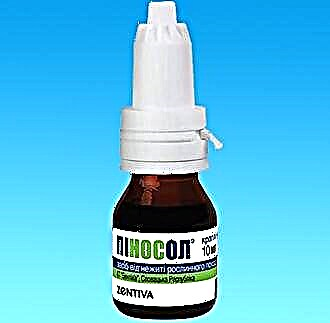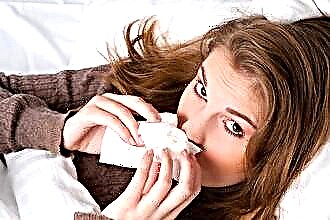Why does my earlobe hurt? Painful sensations often occur in conjunction with the development of a neoplasm in the tissue of the lobe. For many patients, this phenomenon often becomes a worrying sign. Many people suspect the presence of a malignant tumor. But, fortunately, more often than not, there is no reason for serious unrest.

The development of a tumor disease in this area is possible. But the symptoms in this case will be completely different. However, nevertheless, this phenomenon cannot be ignored either. If the earlobes hurt, then this indicates an inflammatory process that can develop under the influence of infectious microorganisms.
Let's figure out why the earlobes hurt and how to cope with this pathological process.
Possible reasons
In almost all cases, painful sensations in the earlobe are associated with the process of inflammation. The violation can be of various origins, the main reasons are as follows:
- atheroma, or wen. A large number of sebaceous glands are concentrated in the ear area. Sebum moisturizes the dermis and produces a disinfecting effect. The intensity of sebum production is different for each person. Excessive fat production can lead to atheroma. The fat clogs the gland. Fat is a round-shaped neoplasm in the earlobe. The onset of atheroma is not accompanied by painful sensations. However, there is a risk of tissue infection. Sebum is a good breeding ground for pathogenic microflora. In addition, atheroma may contain dead particles of the epidermis, dirt and other elements from the external environment. In case of infection, the earlobe hurts, painful sensations can be both pulling and pulsating.
The development of atheroma is facilitated by poor-quality hygiene procedures, impaired metabolic reactions, trauma in the area of the auricle, and so on.
- allergy. A hypersensitivity reaction can develop in a person of any gender and age. But women are more likely to wear various jewelry, so they are more prone to such a violation. Often, an allergic reaction occurs to metals - under the influence of sweat, metal products are oxidized and, upon contact with the skin, cause allergies. Itching and severe dry skin are also common.
- malignant neoplasms. A tumor at an early stage of development does not manifest itself in any way, and the only symptom may be precisely a neoplasm in the tissue of the earlobe.

Painful sensations may be absent even with a significant tumor size. For an accurate diagnosis and confirmation or exclusion of a malignant tumor, a histological examination is required.
- abscess. Failure to comply with hygiene standards when performing an earlobe puncture can lead to the penetration of pathogenic microorganisms into the wound. In this case, the body begins to actively produce leukocytes, and an abscess forms at the site of the lesion.
An abscess is the most common cause of pain in the earlobe.
- ear infection. With otitis media, painful sensations are localized in the ear cavity, but they can also radiate to the lobe, thereby creating a false clinical picture.
Diagnostic measures
To determine why it hurts under the earlobe or the lobe itself, it is possible only by the method of exclusion, since there is no specific diagnosis of this disorder. First of all, you should contact a therapist who will determine the most likely cause of the pathological phenomenon and give a referral to a narrow specialist.
The following may be involved in the treatment of this disorder:
- dermatologist;
- otolaryngologist;
- allergist.
If a malignant tumor is suspected, the patient is referred to an oncologist. However, this does not mean 100% cancerous growth. The specialist will conduct a lot of research and give his verdict. This is a common medical practice.
To accurately determine the cause of painful sensations, the following diagnostic measures are carried out:
- collection of anamnesis. This is an important stage of diagnosis, which allows one to assume the presence of a particular disease.
- visual inspection. The characteristic symptoms suggest a specific disease (allergic reaction).
- palpation. Palpation examination allows you to determine the severity of painful sensations and assess the neoplasm by touch. Also, thanks to this method, it is possible to determine the enlarged duct of the sebaceous gland. This symptom is the main manifestation of atheroma.
- histological examination. To carry out this study, puncture and sampling of biomaterial are performed. Atheroma is diagnosed most often, but other benign and malignant neoplasms are also possible - lipomas, fibromas, etc. It is the histological examination that makes it possible to differentiate the formations.
- allergic tests.
The histological research method is used in rare cases. Most often, visual examination and palpation are enough to make an accurate diagnosis.
Treatment principles
What to do if your earlobe hurts? Therapeutic measures are prescribed taking into account the cause of the violation. Treatment of pathology is carried out through the use of drugs and surgery.
Drug therapy is carried out using the following drugs:
- antiseptic agents. For local disinfection, peroxide, hydrogen, boric alcohol, iodine are used.
- anti-inflammatory drugs. Topical preparations (for example, Nise ointment) stop the further development of the inflammatory process. These funds are used in conjunction with other medicines.
- antibacterial drugs. Antibiotics are used only if the disorder is infectious.
- antihistamines. Such drugs eliminate the symptoms of an allergic reaction.
- ear drops. Prescribed by the attending physician for an inflammatory process in the ear cavity.
The need for surgical intervention arises with atheromas, abscesses, tumors of a different type.
The operation can be either "classical" (an incision of the affected area is performed) or minimally invasive (puncture is performed). In the case of a malignant neoplasm, complete or maximum possible excision of the tumor is required.
What cannot be done?
Self-medication can be dangerous. With painful sensations in the earlobe, you can not:
- squeeze out pustules or "wen". The pathological neoplasm is surrounded by a special capsule, physical impact leads to its rupture. As a consequence, the content spreads to other tissues. Since the contents of the capsule are most often purulent, this threatens with further tissue infection and aggravation of the pathological process.
- warm up the affected area. Under the influence of high temperature, the inflammatory process will develop more intensively.
- use medications on your own. Even with the local use of medicines, an undesirable reaction of the body may develop.
Compliance with the above recommendations will help to avoid dangerous complications, and timely seeking medical help will get rid of the violation in a short time.



